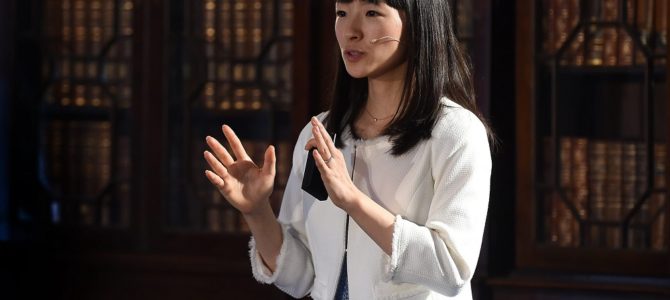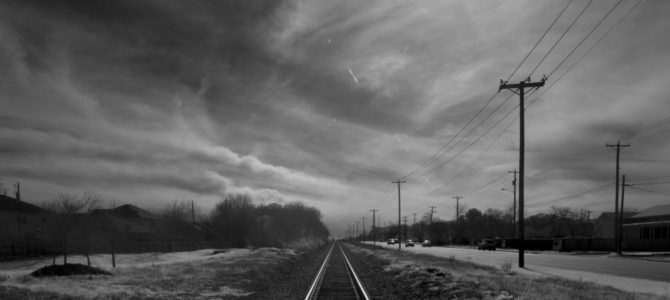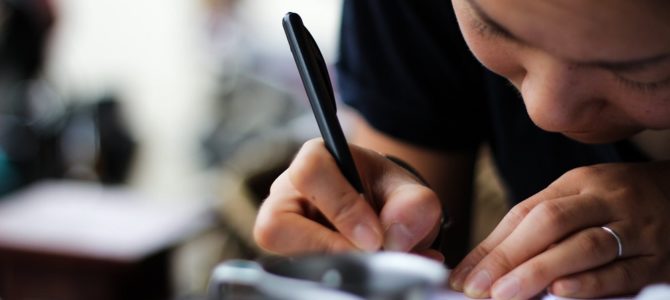
Marie Kondo is taking America by storm. First with her best-selling book “The Life-Changing Magic of Tidying Up” and now with a wildly popular Netflix series, the Japanese organizational expert is changing the way Americans see their belongings, helping them declutter, simplify, and become more “sensitive to joy.”
I wanted to know what the fuss was all about, so I caught a few episodes of “Tidying Up with Marie Kondo.” The eight-episode series was released on January 1, presumably to appeal to Americans still fresh with the fervor of New Year’s resolutions.
The show’s release also happened to coincide with the latest in a series of federal government shutdowns. Shutdowns of all varieties (partial, full, grande, venti) seem to be a regular event these days, happening whenever Congress can’t agree to hit the “snooze” button on its job of passing a budget that doesn’t balance, or can’t agree to blow through the “debt ceiling” they just established a year ago.
Anyway, I digress. The point is: the more I watched the KonMari tidying method in action, the more I became convinced that Marie Kondo is the hero we need to declutter the giant, oppressive mess we’ve made of the U.S. government. I therefore propose that the next episode of “Tidying Up” dispatch Kondo to our nation’s capital.
Tidying Up Washington with Marie Kondo
I can picture the opening scene as the gentle guru arrives in Washington. She is bright-eyed, cheerful, and clad in a lovely skirt ensemble, clearly unaware of the horrors that await. She floats gracefully from her minivan like a tiny Glinda the Good Witch, accompanied by her translator. Walking up the U.S. Capitol steps, the pair knocks at the front door (the Capitol has a front door, right?). “I love the white marble they use on their buildings here,” Marie comments brightly.
Meanwhile, inside, our cameras have been following the squabbling, joyless bunch who call the place home. They can barely function in their cluttered, disorganized space and are constantly tripping over stacks of alphabet-soup agencies, drawers jammed full of pet spending projects, and closets stuffed to the brim with I.O.U.’s. Nonetheless, they pull themselves together to greet Marie as she arrives.
“One thing I like to do before I start working is introduce myself to the house,” Marie says. “To thank it for being a good government that has sheltered you and provided a beacon of liberty to the world for 242 years.” Marie then sits down on the floor and closes her eyes for a moment of silent meditation. The inhabitants stand around awkwardly, giving each other sideways glances and wondering what “beacon of liberty” even means.
Lesson 1: Debt
Over the weeks that follow, Marie guides the dysfunctional American family through a series of lessons on tidying. In Lesson 1, the family is forced to take stock of the sheer magnitude of its mess. “I want you to take all the U.S. government debt in the whole house, and place it into a big pile,” Marie says. “This step is very important. Most people are surprised when they see how much debt the government has actually accumulated.”
Indeed, the resultant mountain of 22,000,000,000,000 I.O.U.’s ascends into the lower stratosphere, dwarfing even Wendy’s pile of clothes in the “Empty Nesters” episode. It’s a jaw-dropping moment. “You don’t realize how much debt there is until you see it like this,” one of the kids says to the camera. “There’s no way I want to have to deal with all this after Mom and Dad pass away.”
Just as the interview concludes, the camera catches mom pushing in a huge wheelbarrow and adding several million freshly made debts to the stack. “MOM! We’re supposed to be reducing right now! Don’t you even believe in this process?”
Lesson 2: Bureaucracy
In Lesson 2, the American family is invited to confront its Byzantine bureaucracy. Marie maintains her cheerful composure when it is revealed that the family is hoarding as many as 10 federal programs to perform the same function, and still has agencies sitting around that it accumulated during the Great Depression.
“I’ve never really thought of getting rid of any of these voluntarily,” dad says. “A couple years ago we had to let go of the National Raisin Reserve and the Raisin Administrative Committee, but that’s only because the Supreme Court forced us to do it.” The camera zooms in closer as he chokes back tears. “That was really traumatic for us. We’d had that committee since the ‘40s, and they had a lot of sentimental value in micromanaging America’s raisin supply.”
Marie nods, trying to sympathize. Her mouth is smiling, but her eyes are not. It’s almost as if she’s beginning to realize what she’s up against.
“I want you to think about this in a different way,” Marie says slowly. “You are not deciding what to throw away, but what to keep. You are deciding what you want to bring forward into your future.” She suggests that the family pick up each federal agency one at a time and hold it in their hands.
“Ask yourself if it sparks liberty,” she says. “You must learn to become sensitive again to what liberty feels like. If it doesn’t spark liberty for you, say ‘Thank you’ to the agency for all it has done for you, then say goodbye.”
Lesson 3: Komono
In Lesson 3, Marie tackles the “miscellaneous” category known as Komono. This includes all the pet spending projects that the family has accumulated over the years. Initially, each family member fiercely defends his or her own junk. “But I really need that $800,000 to study the sexual habits of quails on cocaine,” the National Institutes for Health whines. “If she gets that, then I for sure get my $18 million to promote Egyptian tourism,” counters State.
Again, Kondo encourages the family to consider not only what is lost in reducing clutter, but what is gained. As they dive deep into the recesses of the garage, they find a dusty box labeled “Founding Ideals,” unearthing a treasure trove of old heirlooms such as individual liberty, self-government, self-reliance, and an entrepreneurial spirit. It’s a pivotal moment.
“I never even knew these were here,” mom confesses to the camera. “Now that we’ve opened up so much space in the house, we have some room to display these. Or maybe even use them!”
Marie, who had almost abandoned hope, beams at the family. “I’m so proud of what you have accomplished,” she says. “The spirit of this place feels totally different now. It feels like the home it was always meant to be.”









